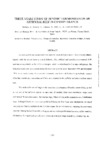Identificador persistente para citar o vincular este elemento:
https://accedacris.ulpgc.es/jspui/handle/10553/359
| Campo DC | Valor | idioma |
|---|---|---|
| dc.contributor.author | Herrera-Pérez, Rogelio | en_US |
| dc.contributor.author | Haroun, Ricardo | en_US |
| dc.contributor.author | Moreno Moreno, María Teresa | en_US |
| dc.contributor.author | Casañas, A. | en_US |
| dc.contributor.author | Soler Onis, E. | en_US |
| dc.contributor.author | Larsen, H. | en_US |
| dc.date.accessioned | 2009-10-08T02:31:00Z | - |
| dc.date.accessioned | 2018-03-01T13:35:33Z | - |
| dc.date.available | null | - |
| dc.date.available | 2018-03-01T13:35:33Z | - |
| dc.date.issued | 1995 | en_US |
| dc.identifier.other | 856 | - |
| dc.identifier.uri | https://accedacris.ulpgc.es/handle/10553/359 | - |
| dc.description.abstract | An artificial reef was constructed in the southern coast of Gran Canaria Island (Canary Islands, Spain), with the aim to increase coastal fisheries. The artificial reef complex is compossed of 84 modular concrete blocks or live different designs, which are distributed in five separated groups. The biological assessment was carried during the last three years between November 1991 and December 1994. A comparative study of associated communities was done with Scuba diving methods. Samples of benthic invertebrates, macroalgae and fishes were obtained in the artificial reef and in a close natural reef.\nThis study define several stages in the succesion and dynamics of benthic communities, as well as the use of the different species in each type of module. Four main succesional stages were determined Initial colonization. Structuring stage. Bloom of sea urchin population and Stabilization stage. Although fisheries activities were prohibited during the first 3 year after deployment, the use of non-selective fisheries technics in the area interrupted the natural dynamic, modifing the community structure. During the last 13 months, a long spined sea urchin proliferation has occupied the modules, eliminating the vegetal and animal cover, changing food and refuge availability, biodiversity, etc. | - |
| dc.language | spa | en_US |
| dc.source | Proceedings Ecoset-95, v. 2, pp. 330-333 | en_US |
| dc.subject.other | Arrecifes artificiales | - |
| dc.subject.other | Bentos | - |
| dc.subject.other | Canarias | - |
| dc.title | Three years of benthic communities on an artificial reef in Canary Islands | en_US |
| dc.type | info:eu-repo/semantics/conferenceObject | en_US |
| dc.type | Conference proceedings | en_US |
| dc.relation.conference | Proceedings Ecoset-95 | en_US |
| dc.identifier.absysnet | 103072 | - |
| dc.identifier.crisid | -;1266;-;-;-;- | - |
| dc.description.lastpage | 333 | en_US |
| dc.description.firstpage | 330 | en_US |
| dc.rights.accessrights | info:eu-repo/semantics/openAccess | es |
| dc.type2 | Actas de congresos | en_US |
| dc.identifier.ulpgc | Sí | es |
| dc.contributor.buulpgc | BU-BAS | en_US |
| item.grantfulltext | open | - |
| item.fulltext | Con texto completo | - |
| crisitem.author.dept | GIR ECOAQUA: Biodiversidad y Conservación | - |
| crisitem.author.dept | IU de Investigación en Acuicultura Sostenible y Ec | - |
| crisitem.author.dept | Departamento de Biología | - |
| crisitem.author.orcid | 0000-0003-1348-692X | - |
| crisitem.author.parentorg | IU de Investigación en Acuicultura Sostenible y Ec | - |
| crisitem.author.fullName | Haroun Tabraue, Ricardo Jesús | - |
| Colección: | Actas de congresos | |
Visitas
61
actualizado el 23-ene-2024
Descargas
88
actualizado el 23-ene-2024
Google ScholarTM
Verifica
Comparte
Exporta metadatos
Los elementos en ULPGC accedaCRIS están protegidos por derechos de autor con todos los derechos reservados, a menos que se indique lo contrario.
